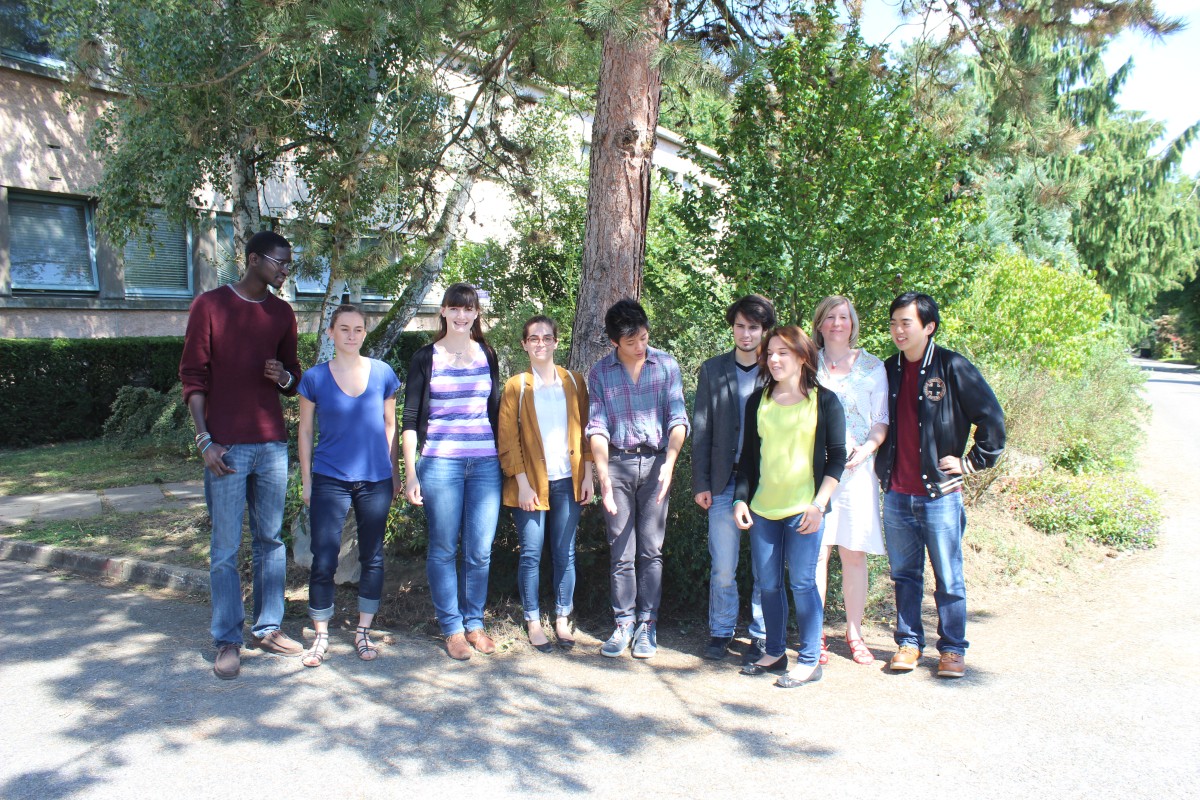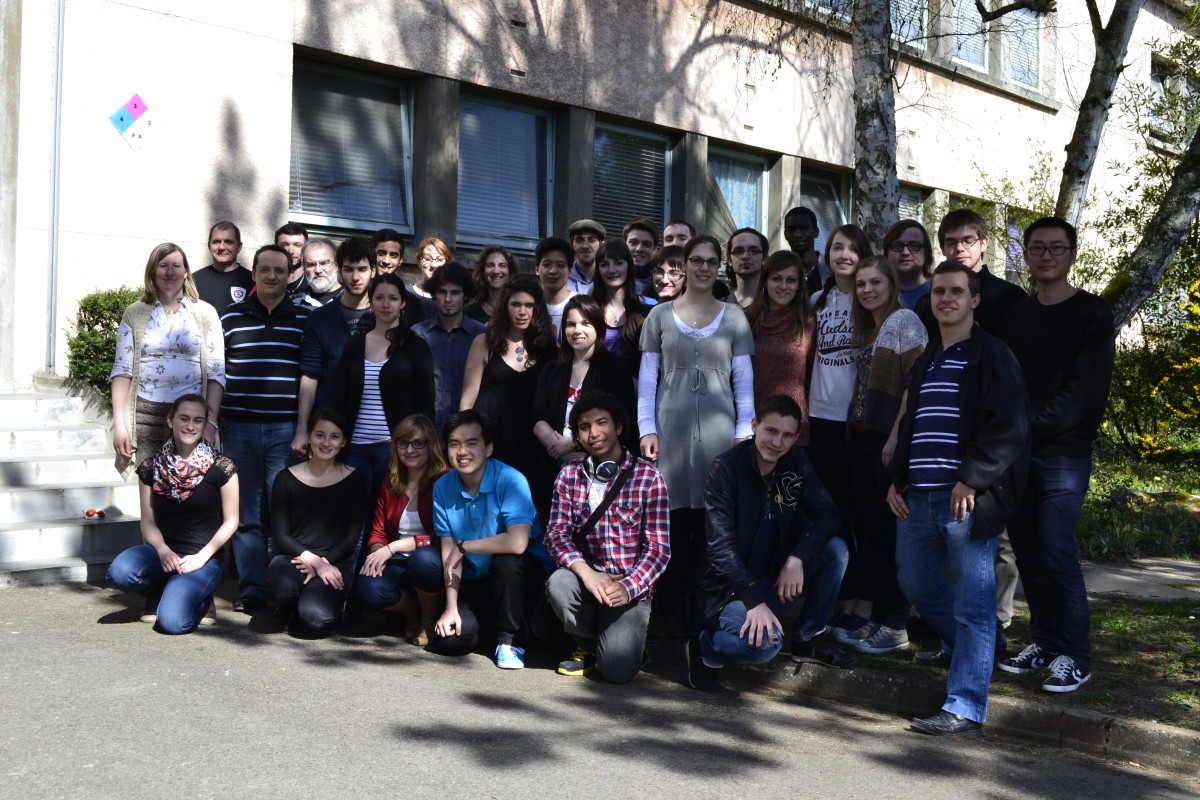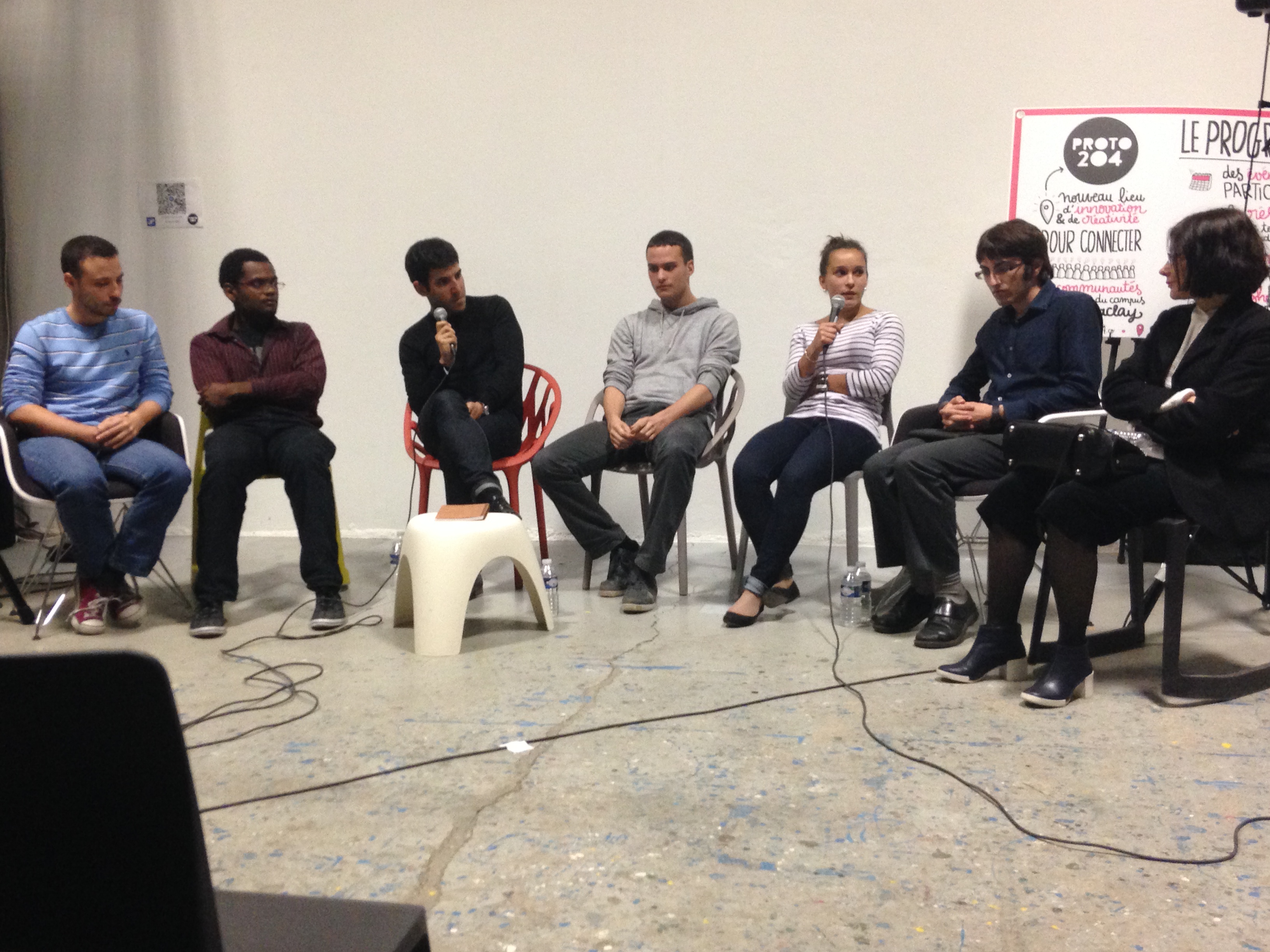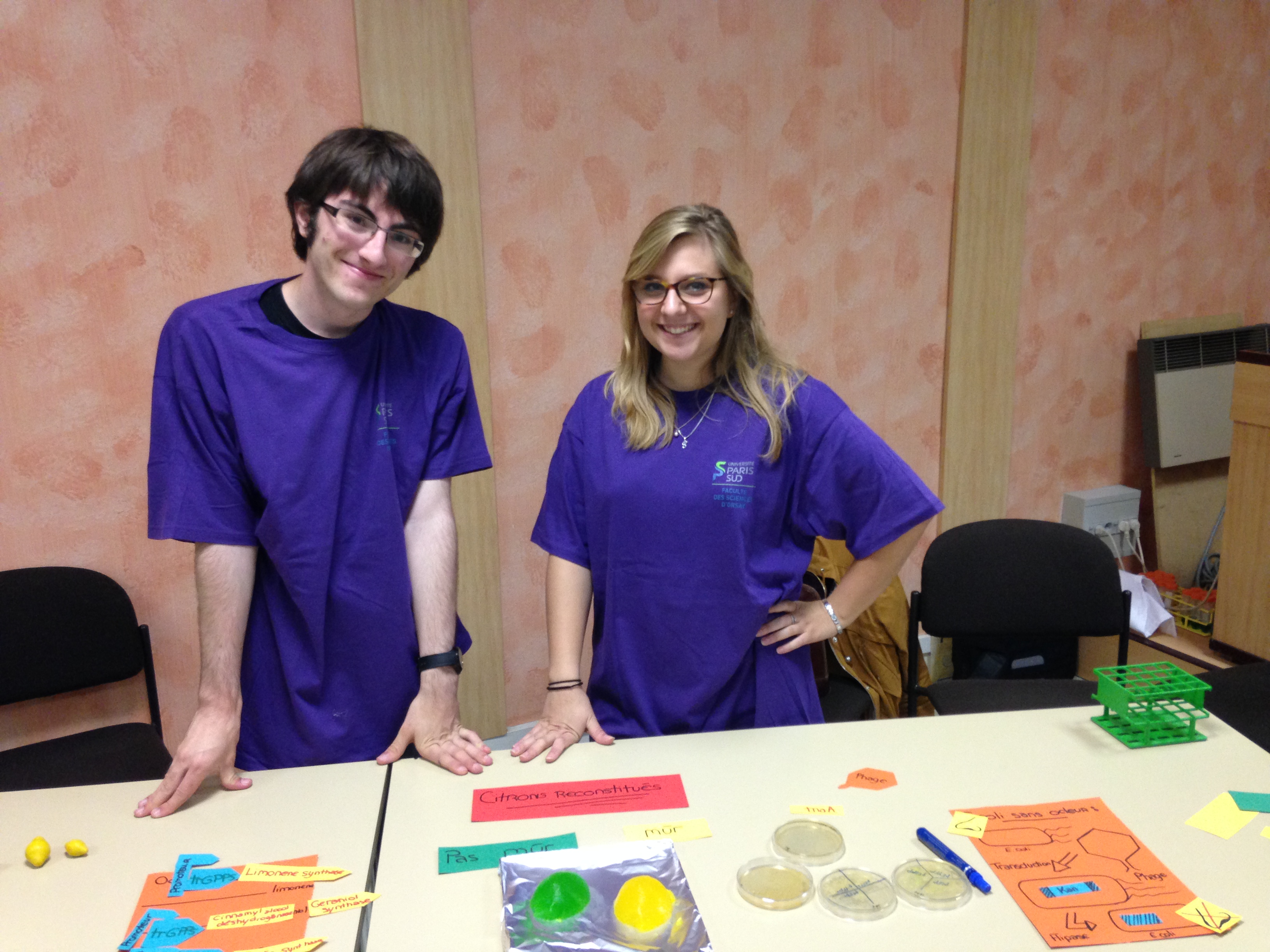Team:Paris Saclay/Outreach
From 2014.igem.org

Contents |
Outreach
Countdown
This page is under Terry's responsibility
- Deadline: 08/oct.
- Text about surveys (Eugène, Raphaël) and interviews (Maher, Juliette, Terry, HV)
- Videos
- Mettre la discussion lycéens.
- Deadline: 12/oct
- Final review by Sylvie.
Thanks
Juliette : Je remercierais aussi personnellement les personnes qui ont accepté de répondre à nos sollicitations pour des entretiens, Lucile, Antoine et Elise (respectivement la sœur de Terry, le fils de Claire et sa copine)
In addition to the team, many people have contributed to the project. We would like to thank them.
We thank Lia Giraud, a very prolific Bio-Artist for guiding us and helping us to define our project. We discussed Bioart and Ethics with her. I invite you to visit her [http://www.liagiraud.com/ website].
We thank another Bio-Artist, Marion Laval-Jeantet, who we met on several occasions and gave us valuable advice.
We also thank [http://agapakis.com/ Christina Agapakis], who came to see us this summer to answer our questions on the Art & Design Track and ethics.
Lucile, Antoine and Elise thank for answering our interviews.
We thank Philippe Perez for the Fast-Lemon videos that you can go watch on our wiki and Lucile a wonderful actress.
We thank everyone who answered our surveys, and all iGEM teams with whom we collaborated.
And most of all, we thank all members of the iGEM team Paris Saclay (Advisors, Instructors and All students). Thank Alexandre, Alice, Anais, Arnaud, Caroline, Christina, Claire, Damir, Dimitri, Eugène, Eric, Fabio, Fanny, Floriane, Hoang-Vu,Jean-Luc, Jérémy, Juliette, Laëtitia, Laura, Leila (X2), Lucie, Maher, Marie, Mathias, Mathieu, Meghane, Mélanie, Nadia, Olivier, Philippe, Pierre, Raphael (X2), Rémi, Romain, Sean, Solenne, Sylvie, Terry, Xavier. All these people have been essential for the successful completion of this project and this wonderful adventure.
Events
This ethical process is built on questions about life representation and biotechnologies; exchange with people became obvious to progress, especially with general public. Ethics was discussed with some French IGEM teams and we pursued our actions during some public events.
If you are interested in knowing more about one of this three folowing events, just clik on the name of the event !
French Meetup
Our team co-hosted the French Meetup along with Bettencourt and Evry, from 2 August 2014 to 3 August 2014. There were 5 teams in total: Bettencourt, Bordeaux, Evry, Lyon, Saclay. We learned a lot about the different projects and exchanged ideas, notably about ethics during our workshop.
Curiositas
Curiositas, held at Orsay, is art-and-science festival that took place on October 4th to 9th. During a dynamic and constructive debate about bioart and bioethics, our teams talked with Marion Laval-Jeantet, artist and promoter of the festival, the Parisian IGEM teams (Paris Bettencourt and Evry teams) and the audience.
Science Festival
On October the 12th, in the occasion of the French Science Festival, laboratories of the Paris-Sud University arranged visits and events for general public. Because it is sometimes difficult to talk about science to children, we tried to didactically approach this with experiences and simple visual presentations to illustrate synthetic biology and our project.
Meeting with high school students
One of the objective of iGEM competition is to promote synthetic biology and to make people aware about the future challenges that it will represent. Thus, we decided to introduce synthetic biology to student from a high school in order to present what synthetic biology exactly is and to collect their feelings about this new science. We were greeted at the high school: “Lycée Jacques Prévert” in the city of Longjumeau near Paris.
We first describe briefly what a gene is and how it is expressed to clear their head up. Hopefully, they knew perfectly this subject. We wanted to know what were their first thought when we told about synthetic biology without described it. They usually answered by explaining the meaning of each words: built something with biological organisms. They were surprised to learn that a bacteria can be used as a machine to produce so many things. Then they realised that maybe we can do whatever we want and it could be dangerous.
The question of GMOs was raised at this point. They said that GMOs were only profitable for company who made them. They underlined the fact that GMOs were used for a short period and maybe we do not know yet all the effects and it might occur some side effects too. Underlying the fact that GMOs can also produce some medicine, they finally believed that it must be a good tool for high and effective production.
At the end of the day, they had all the arguments to make their own project when we asked them to write on a paper what they wanted to do with synthetic biology. We collected the paper and realised that they understood what we presented to them. Here are some of their projects:
- Feed poor countries with specific transformed plant which can survived to the dryness
- Transform human to have wings
- Create a bacteria which can produce paper
- Rainbow human: decrease racism with humans genetically modified to change their skin colour all along the day
This experience was very helpful to really understand what young students think about this new science. We did not expect them to be so open-minded and it made us confident about the future for synthetic biology.
Collaborations
 "
"








